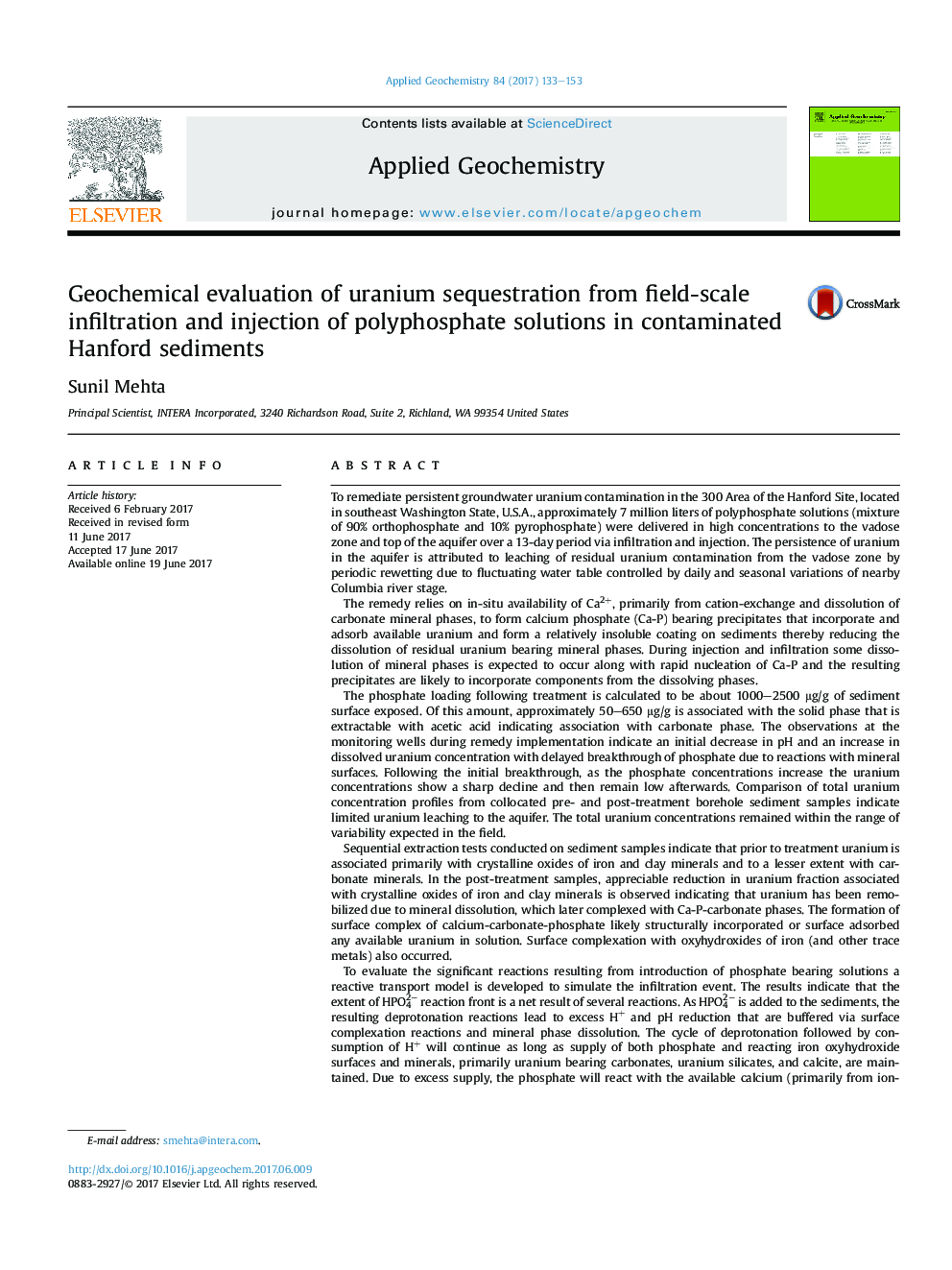| Article ID | Journal | Published Year | Pages | File Type |
|---|---|---|---|---|
| 5752519 | Applied Geochemistry | 2017 | 21 Pages |
Abstract
To evaluate the significant reactions resulting from introduction of phosphate bearing solutions a reactive transport model is developed to simulate the infiltration event. The results indicate that the extent of HPO42â reaction front is a net result of several reactions. As HPO42â is added to the sediments, the resulting deprotonation reactions lead to excess H+ and pH reduction that are buffered via surface complexation reactions and mineral phase dissolution. The cycle of deprotonation followed by consumption of H+ will continue as long as supply of both phosphate and reacting iron oxyhydroxide surfaces and minerals, primarily uranium bearing carbonates, uranium silicates, and calcite, are maintained. Due to excess supply, the phosphate will react with the available calcium (primarily from ion-exchange reactions) and start forming Ca-P bearing precipitates. In this process, any uranium in the solution will adsorb or get bound to forming precipitate and be sequestered.
Related Topics
Physical Sciences and Engineering
Earth and Planetary Sciences
Geochemistry and Petrology
Authors
Sunil Mehta,
